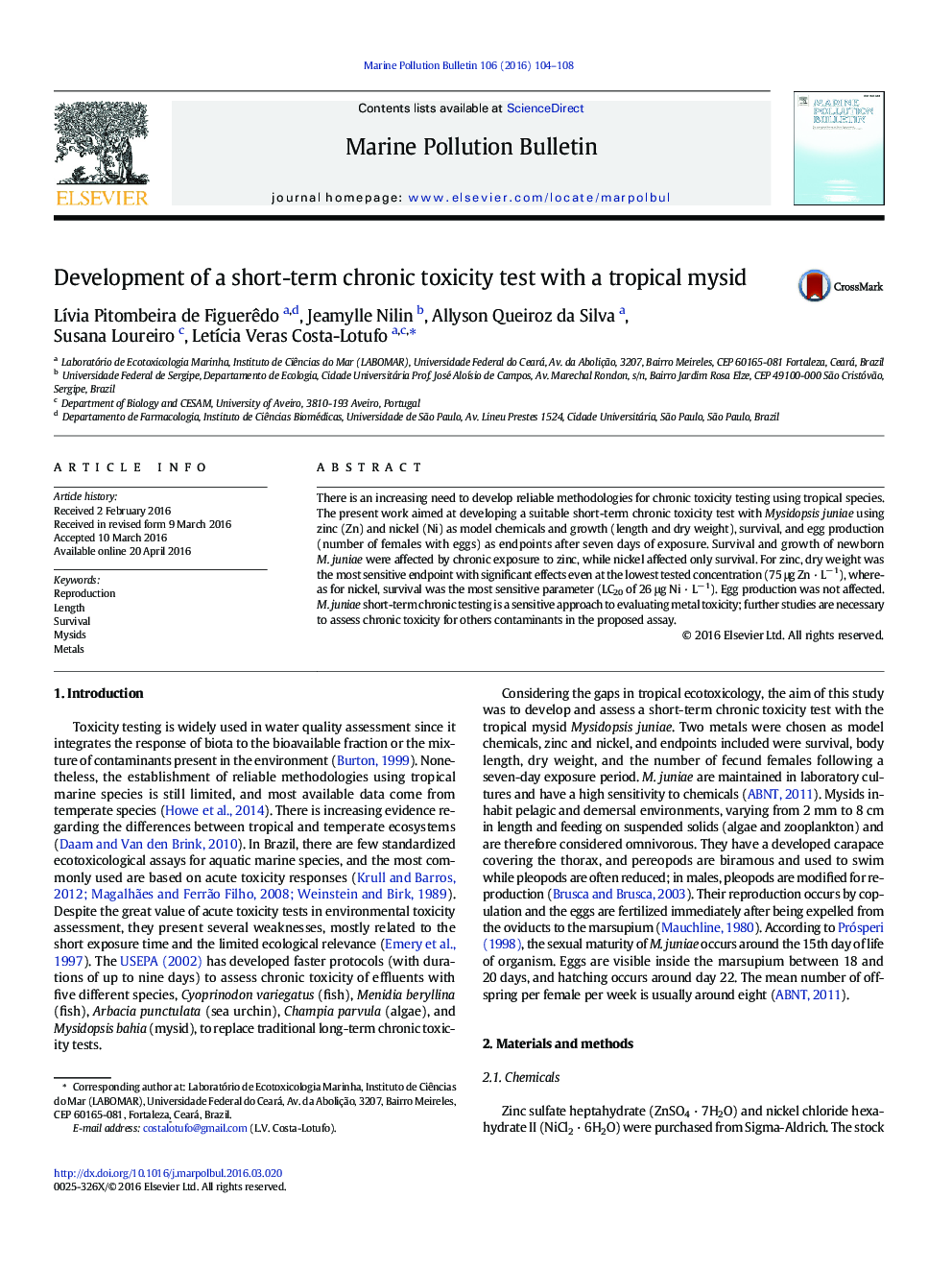| Article ID | Journal | Published Year | Pages | File Type |
|---|---|---|---|---|
| 4476468 | Marine Pollution Bulletin | 2016 | 5 Pages |
•Mysidopsis juniae is a suitable test-organism for short-term chronic toxicity testing.•Zinc and nickel were used in the bioassay as model chemicals.•Survival, length, and dry weight of newborn mysids were affected by zinc.•Nickel only induced effects on mysids survival.•Egg production was not a sensitive endpoint regarding zinc and nickel exposures.
There is an increasing need to develop reliable methodologies for chronic toxicity testing using tropical species. The present work aimed at developing a suitable short-term chronic toxicity test with Mysidopsis juniae using zinc (Zn) and nickel (Ni) as model chemicals and growth (length and dry weight), survival, and egg production (number of females with eggs) as endpoints after seven days of exposure. Survival and growth of newborn M. juniae were affected by chronic exposure to zinc, while nickel affected only survival. For zinc, dry weight was the most sensitive endpoint with significant effects even at the lowest tested concentration (75 μg Zn · L− 1), whereas for nickel, survival was the most sensitive parameter (LC20 of 26 μg Ni · L− 1). Egg production was not affected. M. juniae short-term chronic testing is a sensitive approach to evaluating metal toxicity; further studies are necessary to assess chronic toxicity for others contaminants in the proposed assay.
